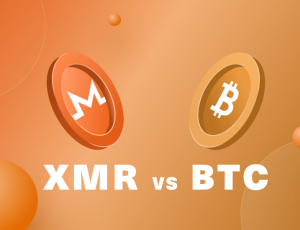Introduction
The world of cryptocurrencies is an exciting yet tumultuous landscape where regulations and adaptability often intersect. In recent times, no other entity embodies this struggle more than Binance, the world’s largest cryptocurrency exchange by trading volume. Facing relentless regulatory scrutiny, Binance’s journey represents a compelling narrative about the resilience and adaptation of the crypto industry.
The Unprecedented Crackdown
The regulatory woes for Binance have been mounting, with the scale of the crackdown being unprecedented. Just last week, Binance’s application to become a crypto custodian was reportedly turned down by German regulators, following which it withdrew its license application in Austria.
In light of the regulatory resistance, Binance has been gradually relinquishing its operations in some European countries while being expelled from others. However, the severest blow came when Binance was stripped of its banking partner, Paysafe, for Euro bank transfers, effective September 25th. While the company is actively seeking a new banking partner, the uncertainty surrounding its future banking relationships is reminiscent of Binance US’s situation, where a temporary suspension of USD payments turned into a permanent inability to process them.
Weathering the Regulatory Storm
Despite the turbulent seas of regulatory pushback, Binance’s institutional partners reportedly remain optimistic about the exchange’s future. And for good reason. While Binance’s market dominance might decline, the exchange’s survival is almost certain, even if it might need to adapt to a more regulated environment.
This resilience and capacity for adaptation were recently exemplified when Binance decided to re-list privacy coins it had earlier planned to de-list for some European users. This move may have far-reaching implications, indicating that privacy coins may receive the green light in the EU – a development that could reshape the privacy coin market dynamics.
Regulatory Spats: A Necessary Step?
In the long run, the skirmishes between Binance and global regulators might come to be seen as beneficial for the overall crypto industry. These spats have the potential to redefine boundaries and reset the regulatory discourse. A compliant stance, even when not legally required, can be interpreted as relinquishing ground in the quest for financial freedom. That’s not to advocate for breaking or bending laws, but rather to question the disparities and inherent inequalities in the global financial system. Often, the righteous path is found between extremes, and reaching it requires challenging the status quo.
Binance’s Eastern Horizons
Looking ahead, Binance is reportedly eyeing the East, and possibly the Middle East, specifically the United Arab Emirates, as its new operational base. Many Binance executives view the UAE as the potential hub for future crypto developments. Planting its flag in the UAE, however, might come with its own set of challenges, as Binance might face intense scrutiny from fiat-backed financial regulators. Nonetheless, no matter the immediate outcome, the long-term implications for the crypto industry are bound to be beneficial.
Conclusion
The story of Binance offers a fascinating insight into the regulatory struggles of the crypto industry. As we observe Binance navigating the rough regulatory waters, it’s crucial to remember the potential for long-term gain for the broader crypto industry. Ultimately, the safekeeping of one’s crypto assets in a hardware wallet remains the most secure strategy in these turbulent times.




